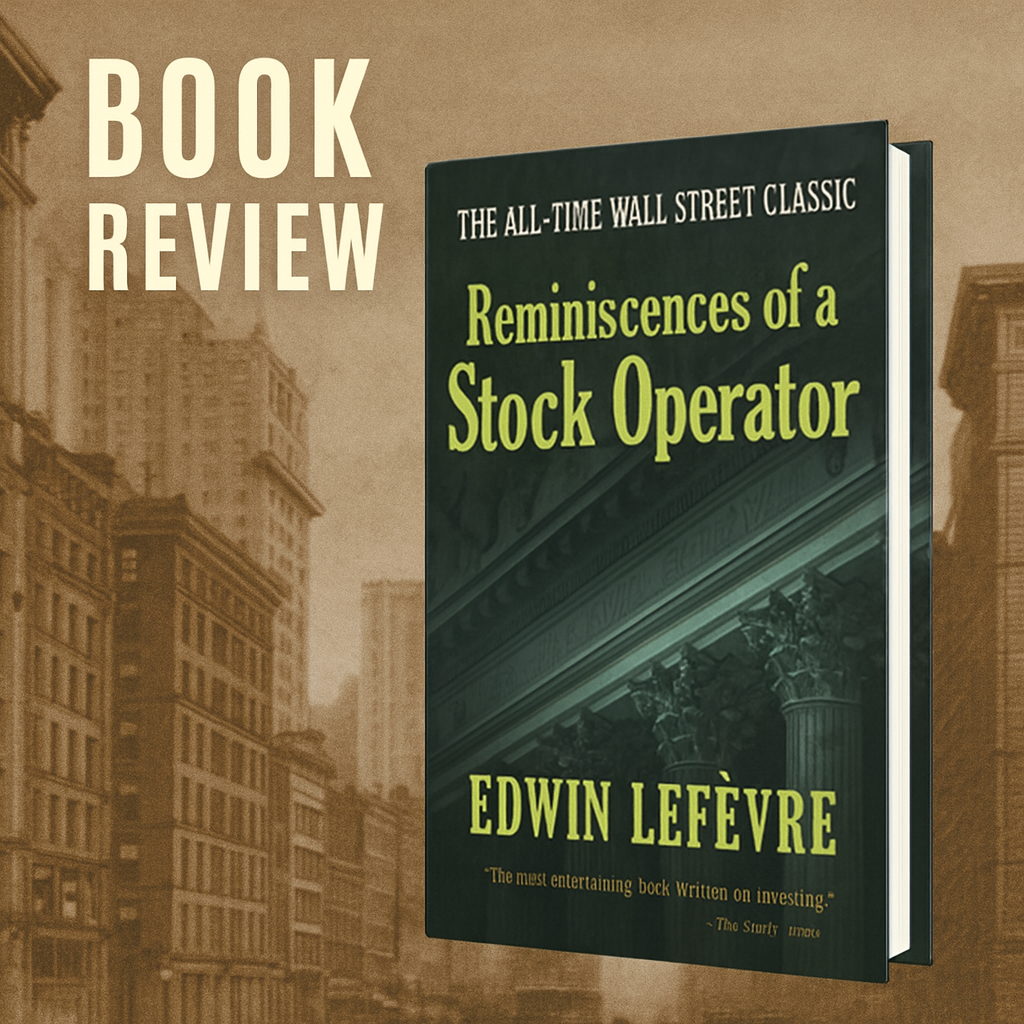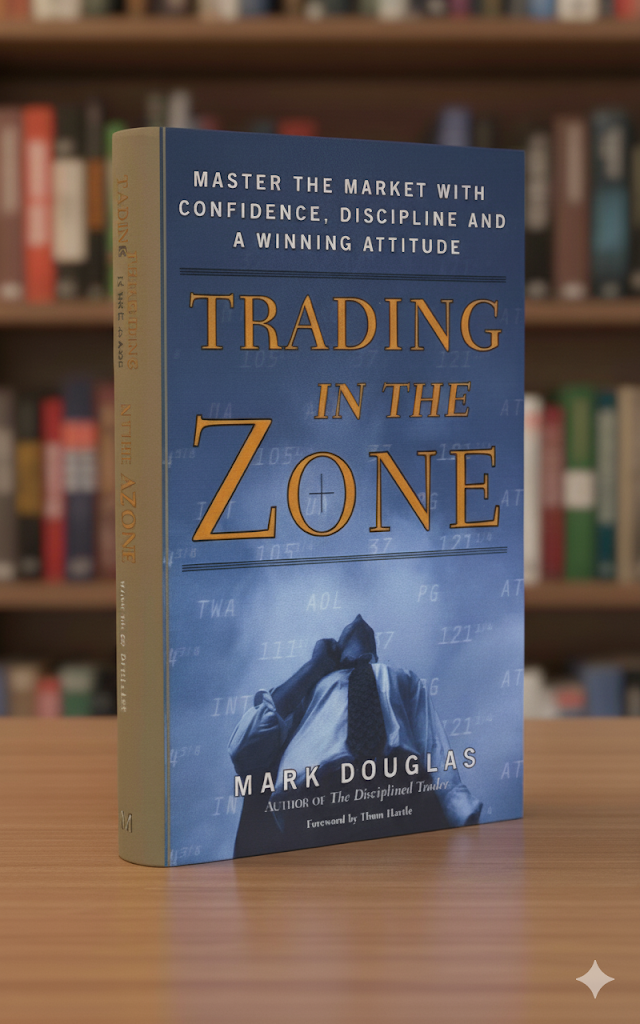The book distills Jesse Livermore’s lessons on fear, greed, and discipline into practical guidance for modern traders. It’s not a how-to, but a clear mirror on speculation that helps you avoid common pitfalls and build better habits—see how these insights still apply today.
Reminiscences of a Stock Operator by Edwin Lefèvre is often called the greatest book ever written about Wall Street. First published in 1923, it is a thinly veiled biography of Jesse Livermore, a legendary trader whose rise and fall captured the drama of early American markets. A century later, it still resonates because the forces that move markets—greed, fear, hope, and overconfidence—have hardly changed. Investors may have faster computers and slicker trading apps today, but the psychology of speculation is remarkably constant. That is why this book, though set in the age of ticker tape, speaks directly to beginners and seasoned traders alike in 2025.
The Making of A Titan
The book follows Livermore’s fictional alter ego, Larry Livingston, as he begins as a boy in a Boston bucket shop, trading small sums and learning the rhythms of price movements. From there, he graduates to bigger stakes, eventually battling the great titans of Wall Street. The story is told in a mix of narrative and reflection: Livingston recounts not only what he did, but also what he thought and felt. This interior voice is what makes the book timeless. It doesn’t lecture; it reveals. Instead of abstract theory, you get the lived experience of a trader wrestling with markets that never quite behave as expected.
At its core, the book delivers several enduring lessons. First, markets are driven more by human behavior than by cold logic. Prices may look like numbers on a screen, but they are shaped by crowds of anxious, excitable people. Livingston warns against chasing tips, following rumors, or falling in love with a stock. Second, discipline is everything. Again and again, the narrator admits that his worst losses came when he broke his own rules. He knew when to stay out of the market, but impatience lured him back in too early. He knew how to cut losses quickly, but pride made him hold on. In this sense, the book is as much about psychology as finance. Third, speculation is not the same as investing. Speculators seek quick profits from price swings, while investors build wealth over time. The book never disguises which game it is playing: speculation is thrilling, dangerous, and unforgiving.
Psychology of A Speculator
One of the book’s great strengths is how vividly it captures the emotional rollercoaster of trading. Lefèvre’s prose is crisp, fast-moving, and filled with sharp observations. Readers can feel the heat of the bucket shops, the tension of a market corner, the agony of a sudden reversal. These details make the book less like a manual and more like a novel—a story that teaches by pulling you inside the trader’s mind. Another strength is its honesty. Livingston repeatedly confesses his failures. He admits he lost fortunes by being greedy, by trading too big, or by ignoring his own judgment. Few finance books show a hero so vulnerable. That candor makes the lessons stick.
Still, the book has its limits. It was written in the early 20th century, and much of its color comes from an era before the SEC, before electronic markets, and before the rise of passive investing. Bucket shops no longer exist, corners are illegal, and trading is dominated by algorithms. Some of the mechanics may feel dated to readers expecting a guide to modern platforms. The book also glamorizes the lone-wolf speculator, which may mislead beginners into thinking they can outwit today’s highly efficient markets by sheer intuition. There is also a bias toward the dramatic swings of speculation, which can overshadow the quieter virtues of patience, diversification, and compounding. In short, it’s not a handbook for building a 401(k); it’s a window into the speculative soul.
Lessons For Investors
For a trader or retail investor today, the key takeaway is psychological, not technical. The book teaches that the hardest part of trading is not spotting opportunities—it is controlling yourself. Markets tempt you to overtrade, to double down on losing bets, to listen to the crowd when you should stand apart. Discipline, patience, and humility matter more than clever theories. As Livingston says, “It never was my thinking that made the big money for me. It always was my sitting.” In other words, the real skill is not predicting every tick, but knowing when to wait, when to cut losses, and when to hold a winning position. For a beginner, this lesson is gold: success comes less from brilliance than from avoiding the obvious traps.
Who should read this book? Anyone curious about the psychology of markets will find it rewarding. Beginners will gain a vivid sense of the emotional challenges they will face once real money is on the line. Finance students will see how theory meets practice in the crucible of speculation. Experienced investors will find echoes of their own mistakes in Livingston’s confessions. Even readers with no intention of trading may enjoy it as a human drama—the story of a man chasing fortune, wrestling with hubris, and learning lessons the hard way.
Conclusion
The verdict: Reminiscences of a Stock Operator is not a step-by-step guide to investing, and it shouldn’t be mistaken for one. It is something rarer: a portrait of market psychology that remains relevant across eras. As a piece of financial literature, it stands almost alone in blending storytelling with insight. It deserves its reputation as a classic. I would rate it a 9 out of 10. The missing point is only because parts of it are frozen in their historical context. Yet if you can read past the antique details, the voice of Larry Livingston still rings true: the market is a stern teacher, and every generation must learn, or relearn, the same costly lessons.
In the end, this book matters because it reminds us that speculation is as old as human ambition. Markets may evolve, but people remain people. Greed and fear still drive rallies and crashes. Hope and despair still move traders to act against their better judgment. And discipline—rare, fragile, but essential—still separates the survivors from the casualties. For readers today, whether they’re opening their first brokerage account or reflecting on decades in the market, Reminiscences of a Stock Operator is less a relic than a mirror. It shows us not just how markets work, but how we work when money, risk, and desire collide. That is why, a hundred years on, this book still belongs on every investor’s shelf.









